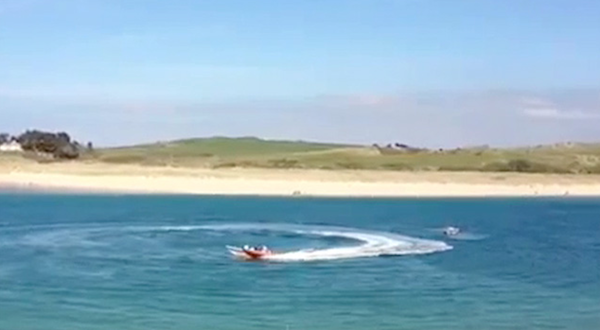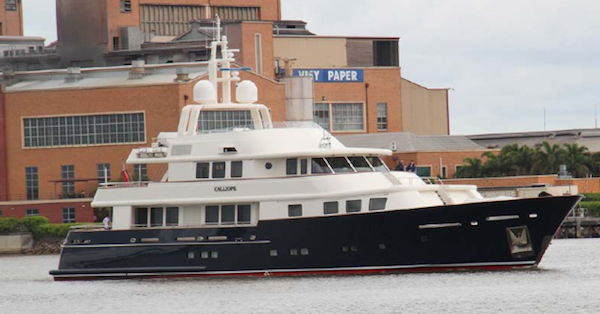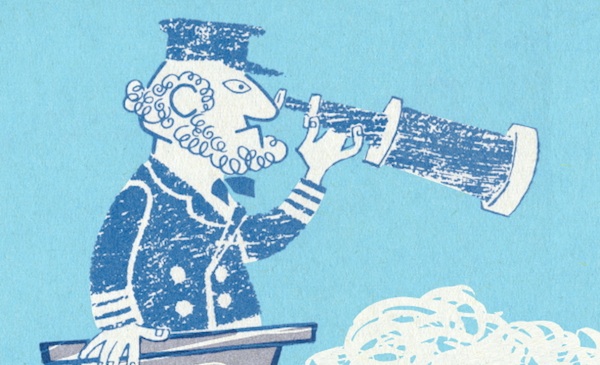Looking back at 2014: safety
In the lead up to a new year, we look back at our coverage of the superyacht crew sector in 2014. Here, we recollect some of the safety issues synonymous with the industry which cropped up during the year.…
Full report on ‘Milly’ RIB accident released
Earlier this year, we covered a RIB accident that resulted in two fatalities and serious injuries and led the Marine Accident Investigation Branch (MAIB) to issue a safety bulletin immediately after the accident to raise awareness about the importance of attaching kill cords. The MAIB have since released their full report on accident, which raises some serious safety and design considerations for crew that are involved with tender driving operations.
As a result of the investigation, MAIB has addressed a number of safety issues. “The evidence of this and previous accidents would indicate that kill cord use is still sporadic, and that much more needs to be done to make attaching a kill cord second-nature when taking over the helm of a powerboat," concludes the report. "Furthermore, Mr and Mrs Milligan were unaware of the hazards associated with allowing their children to sit and stand in front of their RIB while it was travelling and turning at high speed." Read the full online coverage here.
Report released following Calliope fatality
The Australian Transport Safety Bureau (ATSB) released a report following the death of the assistant engineer on board the 43m motoryacht Calliope in Sydney Harbour last year. The incident occurred as the yacht transited the Glebe Island Bridge on 8 February 2013, en route to a day cruise around the harbour.
“As Calliope transited the Glebe Island Bridge, it was off course and veered towards the bridge structure,” the report explains. “To minimise any damage to the vessel, the crew attempted to walk a fender between the yacht’s hull and any possible points of contact. During this process, a crewmember leaning over the side of the yacht positioning the fender was caught between the yacht and one of the bridge-mounted fenders.” As a result, the crewmember was pulled over the yacht’s side and into the water. He was retrieved from the water four minutes later but died as a result of the injuries he had sustained.
Calliope’s management company has told the ATSB that the vessel’s SMS procedures have been updated to require the completion of a passage plan for all voyages, and that procedures for transiting bridge openings will also be issued. Read the full report here.
Extra vigilance over jet ski operations
Following a fatal jet ski accident, which took place in Porquerelles near St Tropez in July this year, the French authorities are exercising more vigilance with regards to tender and jet ski operations in the South of France. According to local reports, the victim was ejected from the jet ski, on which she was traveling with a companion, after being hit by a big wave.
The new regulations reveal that captains can now be liable for any breaches of the law regarding operation of jet skis and tenders belonging to their vessel, even if he or she was not personally involved in the incident. As a result, it is of utmost importance that superyachts cruising in the area need to be aware of speeding limits and control reckless behaviour when crew or guests are operating tenders or jet skis.
“The onus is on captains to instruct their crew and guests as to the regulations they need to abide by when using tenders or jet skis, including informing guests and crew of the speed limits in different areas, as well as being fully aware of local regulations,” Camper and Nicholsons explains. “French authorities recommend conducting a full briefing on how to safely operate tenders and jet skis before guests or crew make use of the craft.” Read the online coverage in full here.
The trouble with relying on AIS…
The MAIB published an investigation report into the collision of a cargo vessel whilst overtaking a tug and its tow in the Dover Straights in January 2014. The report in question found that the overtaking cargo vessel’s officer of the watch was alone on the bridge and had not seen the tug or tow as he did not keep a visual lookout or monitor the radar. Instead, he relied solely on Automatic Identification System (AIS) information for collision avoidance, which neither the tug nor tow were transmitting.
“This is another classic example of catastrophic bridge watchkeeping,” says Adrian McCourt, managing director of Watkins Superyachts. “AIS has undergone mission creep from what was a vehicle for others to be able to identify traffic, to an all-singing, all-dancing substitute for common sense and compliance with the collision regulations. Indeed, IMO has said that, ‘the potential of AIS as an anti-collision device is recognised and AIS may be recommended as such a device in due time’." Read the full online coverage here.
NEW: Sign up for SuperyachtNewsweek!
Get the latest weekly news, in-depth reports, intelligence, and strategic insights, delivered directly from The Superyacht Group's editors and market analysts.
Stay at the forefront of the superyacht industry with SuperyachtNewsweek
Click here to become part of The Superyacht Group community, and join us in our mission to make this industry accessible to all, and prosperous for the long-term. We are offering access to the superyacht industry’s most comprehensive and longstanding archive of business-critical information, as well as a comprehensive, real-time superyacht fleet database, for just £10 per month, because we are One Industry with One Mission. Sign up here.
NEW: Sign up for
SuperyachtNewsweek!
Get the latest weekly news, in-depth reports, intelligence, and strategic insights, delivered directly from The Superyacht Group's editors and market analysts.
Stay at the forefront of the superyacht industry with SuperyachtNewsweek







